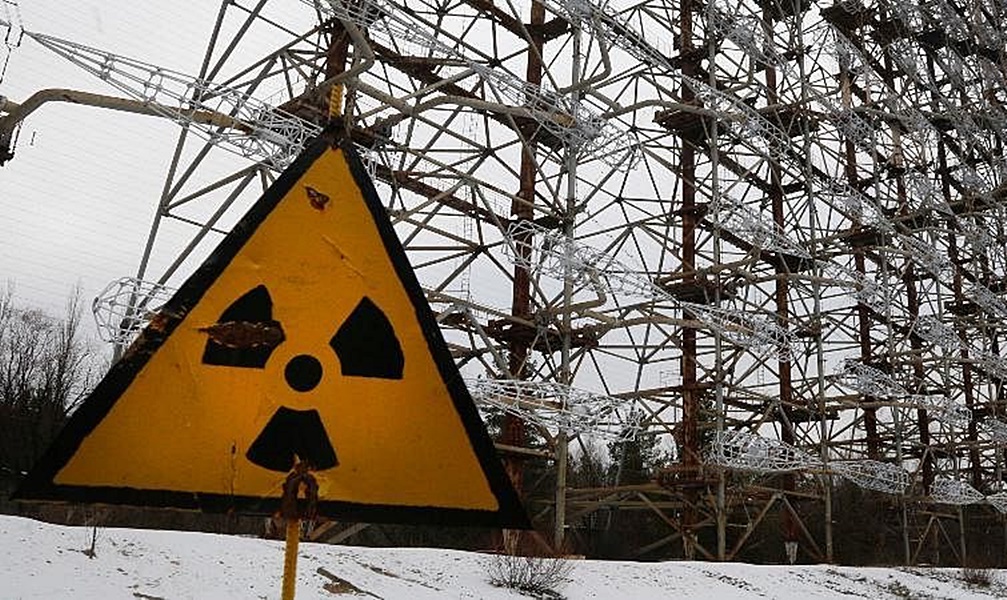On the evening of February 24, 2022, the Chernobyl Exclusion Zone and all facilities of the Chernobyl Nuclear Power Plant were seized by the Russian forces. The entire shift working at the NPP have been held hostage for fourteen days already. They are supposedly offered dry food rations, but they remain under huge psychological pressure, banned from being replaced by another shift, which is in breach of operation rules. Moving through the exclusion zone, Russian tanks and other hardware stirred the topsoil, which increased the radiation background across the area. It should be understood that the Russian forces are being immediately and massively exposed to radiation while in the exclusion zone.
On March 3, 2022, Ukraine appealed to the IAEA in connection with the Russian seizure of the Chernobyl NPP. Ukraine has urged the agency to take action toward an immediate ceasefire and create a 30-km access denial zone around the NPP, as well as intensify the work of the headquarters at the Incident and Emergency Center (IEC IAEA) to coordinate action to prevent nuclear terrorism at the Chernobyl NPP and ensure humanitarian and psychological assistance to staffers. The Russian forces have seized spent nuclear fuel storage facilities (SNFSF-1, SNFSF-2); the new safe confinement at the Shelter site; as well as units1, 2, and 3 of the Chernobyl NPP, all of which are undergoing a decommissioning stage.
On March 9, 2022, the Chernobyl NPP and the Exclusion Zone were de-energized, while the latter hosts 20,000 spent fuel assemblies requiring constant cooling. Also, amid blackout, the ventilation system fails, which leads to significant radiation exposure of personnel, and so does the fire extinguishing system. If there is no cooling, temperature will rise, steaming will occur, as well as the release of radioactive substances that could then flow toward Belarus, Russia, and the European Union – along with the wind.
A forcible seizure of such a facility is a gross violation of Art. 56 Paragraph 1 of Protocol Additional (I) to the Geneva Conventions of 1949, which provides: “Works or installations containing dangerous forces, namely dams, dykes and nuclear electrical generating stations, shall not be made the object of attack, even where these objects are military objectives, if such attack may cause the release of dangerous forces and consequent severe losses among the civilian population.»
The actions of the aggressor state raise a number of complex questions from the international nuclear law perspective. This is, for example, the issue of liability for prompt notification of a nuclear accident (Article 2 of the 1986 Convention on Early Notification of a Nuclear Accident). Although Ukraine, as a state, has temporarily lost control of its nuclear facility, Ukrainian personnel continue to work at the plant. However, as mentioned above, the personnel are under the control of the occupying forces, which poses a clear threat to their lives and health, so the state may lose the ability to obtain reliable information about the situation at the facility.
At the same time, the Russian Federation has a well-established «tradition» of grossly violating the Convention on Early Notification, which is confirmed by the actions of the aggressor state against the background of ruthenium-106 emissions recorded in October 2017 and the Nyonox incident in August 2019. Amid the unprecedented disregard for international law as such, demonstrated by Russia over the past two weeks, such actions require fixation and appropriate response on the part of the international community and international organizations.

